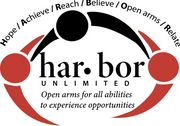
A stroke—which nearly 800,000 Americans experience annually—is a medical emergency that affects the brain. While a minor incident can have little effect on a person's quality of life, a major one can result in serious disabilities like paralysis and require stroke rehabilitation. Understanding this common medical emergency will ensure you know what to do if it ever affects you or a loved one.
A Guide to Strokes
What is a stroke?
There are two types of this condition, with one being an ischemic stroke. It occurs when plaque forms on the walls of the brain's arteries, interrupting or reducing blood flow to the area. As a result, the brain does not receive the oxygen and nutrients it needs.
On the other hand, a hemorrhagic stroke occurs when a vessel in the brain ruptures and bleeds. In this case, blood accumulates and compresses the surrounding tissue, leading to severe damage that can quickly worsen.
What are the symptoms?
Stroke symptoms include headaches, tingling, confusion, vision trouble, loss of consciousness, trouble swallowing, and even paralysis in the face, arm, or leg. Since the condition usually occurs in one brain hemisphere, it affects one side of the body more than the other.
"BE FAST" is an acronym to help you remember stroke symptoms. It stands for balance loss, eye trouble, facial drooping, arm weakness, speech difficulty, and time—which encourages you to seek treatment as promptly as possible to minimize health problems.
How is it treated?

After a stroke, doctors focus on the underlying risk factors that contributed to it to prevent a recurrence. Common treatments include medication or surgery to dissolve clots, stop brain bleeding, or protect the organ from damage.
Stroke rehabilitation helps patients overcome any resultant disabilities and regain a good quality of life. It often involves exercise, assisted movement, mirrors stimulating the brain, and even music therapy. However, the program will depend on the patient's specific needs.
How can you prevent a stroke?
You can prevent a stroke by reducing or treating the risk factors that accompany it. These include high blood pressure, atrial fibrillation, and diabetes. You can do this through medication, as well as quitting smoking and reducing cholesterol intake. Making dietary changes to focus on natural foods, like whole grains, legumes, and fresh fruits and vegetables, can also reduce the risk of experiencing a stroke.
If you or a loved one needs stroke rehabilitation after experiencing this health condition, turn to HARBOR Unlimited in O'Fallon, MO. This trusted non-profit serves people of all ages and abilities throughout Montgomery County and the surrounding areas, specializing in inclusion camps, therapeutic recreation, and adaptive sports for people with special needs. They are renowned throughout the region for their compassionate care, friendly volunteers, and successful results. Learn more about them on their website and call (314) 956-2665 to discuss their stroke rehabilitation programs.
About the Business
Have a question? Ask the experts!
Send your question

